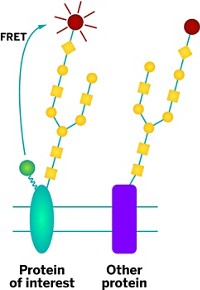Advertisement
Grab your lab coat. Let's get started
Welcome!
Welcome!
Create an account below to get 6 C&EN articles per month, receive newsletters and more - all free.
It seems this is your first time logging in online. Please enter the following information to continue.
As an ACS member you automatically get access to this site. All we need is few more details to create your reading experience.
Not you? Sign in with a different account.
Not you? Sign in with a different account.
ERROR 1
ERROR 1
ERROR 2
ERROR 2
ERROR 2
ERROR 2
ERROR 2
Password and Confirm password must match.
If you have an ACS member number, please enter it here so we can link this account to your membership. (optional)
ERROR 2
ACS values your privacy. By submitting your information, you are gaining access to C&EN and subscribing to our weekly newsletter. We use the information you provide to make your reading experience better, and we will never sell your data to third party members.
Analytical Chemistry
Finding Phosphoproteins
Protein Analysis: Nanopolymer helps scientists detect and quantify an important protein modification
by Laura Cassiday
March 21, 2011

Adding or removing a single phosphate group can dramatically change a protein's activity, and cells make use of this modification to control protein function in response to signals from the environment. Now scientists have developed an easy method to detect protein phosphorylation (Anal. Chem., DOI: 10.1021/ac2000708). The researchers say the technique could lead to a greater understanding of cell signaling pathways and how to manipulate them to treat disease.
Scientists usually detect phosphoproteins by labeling them with radioactive phosphorous or by using antibodies that recognize specific phosphorylated amino acid residues. But these methods have shortcomings: Working with radioactivity is cumbersome and hazardous, and antibodies aren't available for some phosphorylation sites.
W. Andy Tao and colleagues at Purdue University instead wanted to sensitively detect and quantify protein phosphorylation without radioactivity or antibodies. In a recent study (Mol. Cell. Proteomics, DOI: 10.1074/mcp.M110.000091), the researchers had synthesized a spherical, nanoscale polymer made up of numerous branched polyamidoamine molecules. The investigators studded the nanopolymer with titanium ions that bind tightly to phosphate groups on proteins. Tao's team used the nanopolymer to purify phosphoproteins from cell extracts and identify them by mass spectrometry.
But, says Tao, "not every research group has access to mass spec. We wanted to develop a technique that any lab could use on the bench for routine detection of phosphoproteins." So the investigators added a "handle" to their titanium-functionalized nanopolymer that could link the nanopolymer with an enzyme known as horseradish peroxidase. When the researchers added the enzyme to a sample containing nanopolymer-bound phosphoproteins, it attached to the nanopolymer and catalyzed a light-emitting reaction. The amount of light produced corresponded to the amount of phosphoprotein in the sample.
Tao and coworkers' new assay is similar to the protein detection workhorse of many labs, the enzyme-linked immunosorbent assay (ELISA). But a key difference is that instead of using antibodies to capture phosphoproteins, Tao's method uses their functionalized nanopolymer, which they call pIMAGO.
Using the new method, the investigators accurately measured as little as 100 pg of a phosphoprotein standard, which is similar to the detection limit of an ELISA, Tao says. Moreover, they monitored changes in the proteins' phosphorylation after they added enzymes that install or remove phosphate groups. To demonstrate that they could use the method to study phosphorylation states in cells, the researchers compared phosphorylation of the yeast protein Cdh1 purified from cells at different stages of the cell cycle.
Daniel Fisher, a biochemist at the Institute of Molecular Genetics of Montpelier, in France, says that the new method could prove especially useful for drug companies trying to find inhibitors of cancer-causing kinases, the enzymes that add phosphate groups. "Most big pharmaceutical companies have kinase programs" that use phosphorylation-based assays, he notes.
Tao hopes that not only drug companies but also academic researchers will use his method. He's working on improvements that will allow researchers to directly analyze phosphoproteins from complex mixtures such as cell lysates without having to purify the individual proteins. "We want to make the assay as streamlined as possible," he says.





Join the conversation
Contact the reporter
Submit a Letter to the Editor for publication
Engage with us on Twitter